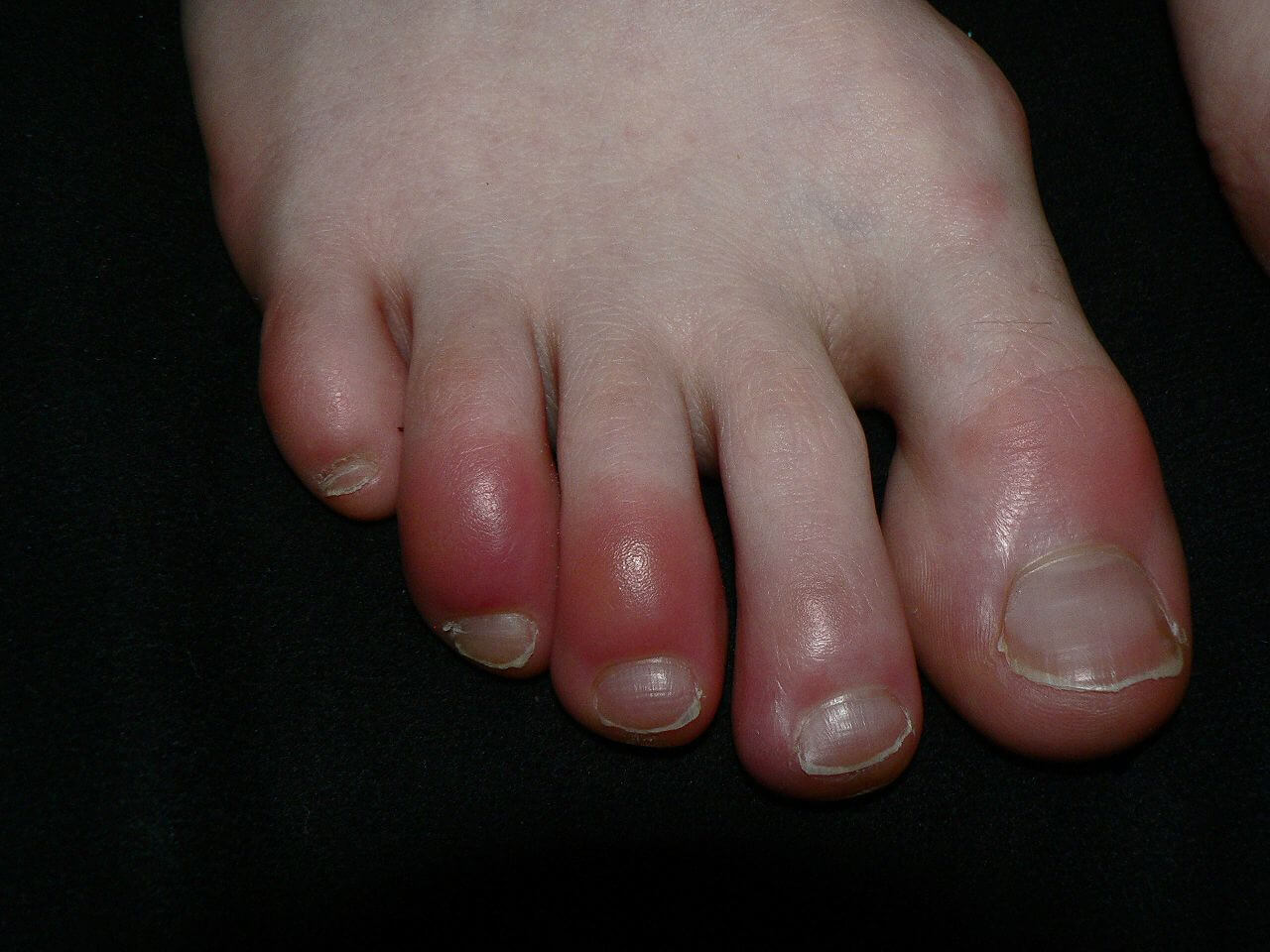Connect With Us
Chilblains
 Chilblains, also known as pernio and perniosis, is a medical condition that occurs when a predisposed individual is exposed to cold (either wet or dry), causing tissue damage. It is often confused with frostbite and trench foot.
Chilblains, also known as pernio and perniosis, is a medical condition that occurs when a predisposed individual is exposed to cold (either wet or dry), causing tissue damage. It is often confused with frostbite and trench foot.
Frostbite refers to the freezing of a part and trench foot is typically associated with cold,wet, and unsanitary conditions.
In Chilblains, the cold exposure damages capillary beds in the skin, which in turn causes redness, itching, blisters, and inflammation. Chilblains can be prevented by keeping the feet and hands warm in cold weather. Chilblains can be idiopathic (no specific cause), but may also be a manifestation of a serious medical condition that needs to be investigated. A history of chilblains is suggestive of a connective tissue disease (such as lupus). Chilblains in infants, together with severe neurologic disease and unexplained fevers, can be seen in Aicardi–Goutières syndrome, a rare inherited condition.
The areas most affected are the ears, earlobes, nose, and extremities (feet, toes, hands and fingers).
Signs and symptoms
- Blistering of affected area
- Burning and itching sensation in extremities
- Dermatitis in extremities
- Digital ulceration (severe cases only)
- Erythema (blanchable redness of the skin)
- Pain in affected area
- Skin discoloration, red to dark blue
Duration
- With treatment, chilblains usually heal within 7–14 days.
Treatment
- Keep area warm
- Use a topical steroid cream to relieve itch.
- Contact a physician for immediate treatment, as some vasodilatory creams may also be helpful
Prevention
- Avoid rapid changes in temperature (from cold to warm).
- Wear warm shoes, socks and gloves.
- Wear a hat and a scarf to protect the ears and the nose.
- Avoid tight fitting socks/shoes.
- Place cotton wool between the toes.
- Recommend soaking in warm water with Epsom salts for 15–20 minutes, 3–4 times a day.
